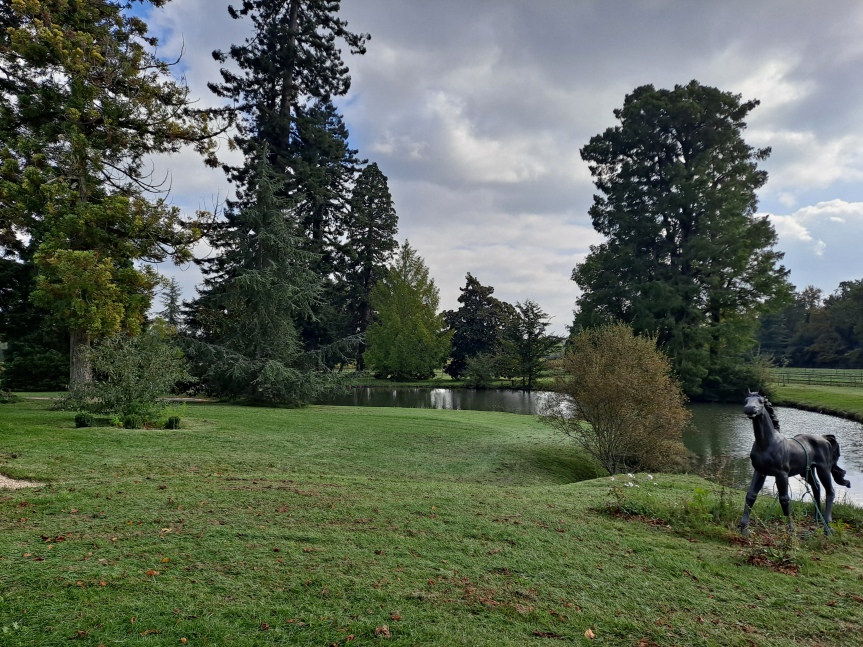Just take a right turn off the Route des Châteaux (the D2) once you have passed through the famous wine village of Margaux. With its undulating vineyard clad hills and forests this little enclave of 600 hectares (one of Bordeaux’s smallest) with only 35 producers is worth the small detour.
There’s a cute little maison du vin and wine producers that will thank you for taking the trouble.
It is appellations like Moulis (or Listrac its twin), a few minutes out of your way, that are today the source of Bordeaux wines of terrific value. The problem is that their past image of producing rustic wines (whose success depended on the number of decades one could keep it) is long gone but is difficult to shake. But shake it must do as the wines today are delicious and often not more than 15€ per bottle.
As vineyard management and winemaking has become more precise throughout the Bordeaux wine region, appellations such as Moulis deserve another chance. The late ripening Cabernet Sauvignon, the traditional predominant variety here is now grown in warmer more gravelly corners of the vineyards which helps produce those silky characteristics that we love when it is able to properly ripen. Today the percentage of Merlot is growing here, more suited to its predominantly cooler clay soils. Global warming too has helped.
The most famous Moulis is Chasse Spleen with its wonderful evocative name that comes from a famous poem by Charles Baudelaire in 1857 (Spleen – ‘Je suis comme le roi d’un pays pluvieux…I am like the king in a rainy country – no wonder its a favorite amongst the Brits). It has a pretty château and gardens full of modern art and is five minutes off the D2 at Arcins (just turn left at the famous Lion d’Or restaurant). You can visit it in the season right throughout the weekend. Year in and out it makes reliable good, classic claret and has been run by the same dynamic wine family for generations, the Villars.
Over the years I have tasted a number of wines from small producers that I often buy from Moulis. I live in St Emilion but I love the addition of the more linear cedary smooth Cabernet Sauvignon in the blend of wines that one finds in this area and its neighbour Listrac. My favorites include Biston-Brillette, Lestage-Darquier, Poujeaux. (as I outline along with my favorites from other unknown appellations here in my book Bordeaux Sip by Sip Sudouest Editions)
I also love wines from the Listrac Appellation including Châteaux Saransot-Dupré, Mayne Lalande (the owner of which Bernard Lartigue recently died, a talented winemaker), Lounier (who makes a super 100% Petit Verdot in good years as homage to his father).
But my best recent ‘discovery’ is the delicious Mauvesin-Barton wine made by the young daughter Melanie Sartorious of the owners of Léoville and Lango Barton in the hallowed St Julien appellation 20 minutes or so to its north. They are another dynamic wine family of Bordeaux. We are in a different world here in Moulis – but it is a rather nice one with its forests and pastures for the horses.
The terroir with its thick clay is not like the gravels of the terroir of St Julien but there is a cosy environment here. It was the decision of this key Bordeaux family (whose history stretches back to the Flight of the Wine Geese in 1690 when the original Barton family arrived from Ireland) to choose to invest here and to represent and stand up for the wines of this small appellation. The family purchased the estate of 55 hectares in 2011 (and additional hectares of forests which is common here) and invested 4 million euro in a new winery, replanting and reestablishing the vineyards and château.
Melanie works with the original cellar master who was retained after 32 years of making the wine here and the consultant is Eric Boissenot and his team. The vineyards are planted with 54% Merlot, 35% Cabernet Sauvignon and 11% Cabernet Franc. Like many other appellations in Bordeaux that are not in the limelight (Bordeaux does have 65 after all), Moulis still has a perceived value linked with its past which blocks prices below a certain threshold. The wines sell for around 15€ per bottle retail however well-estimed the vintage. Costs of production here have to be monitored to the centime. But the Barton-Sartorious family are looking to help revatilise the reputation of Moulis with their wines. They have started by producing delicious wines full of fruit but fresh and a good structure – the sort of wines Bordeaux built its reputation on.
We tasted the 8 vintages from 2011 since their purchase through to 2019.; each one having its own character with an obvious step up in quality and individuality as we progressed. In each though I found a freshness and silky texture.
2011: original vintage that they bought but did not make, classic lean style 2012: pretty fresh red fruit flavours 2013: spicy nose, light and fresh 2014: more meaty, denser more savoury 2015: complex nose of black cherry with minty notes with again this fresh savouriness 2016*: vanilla and ripe plum on the nose, thick on the palate, complex with mineral finish that lingered 2017: volume of fresh fruit (very small volume due to frost loss) 2018*: spicy nose notes of coffee and layers of black wit slightly smokey finish. 2019*: pretty summer fruits and silky (*favorites)
Nicolle Croft – private wine guide specialising in the SIPs off the beaten path














